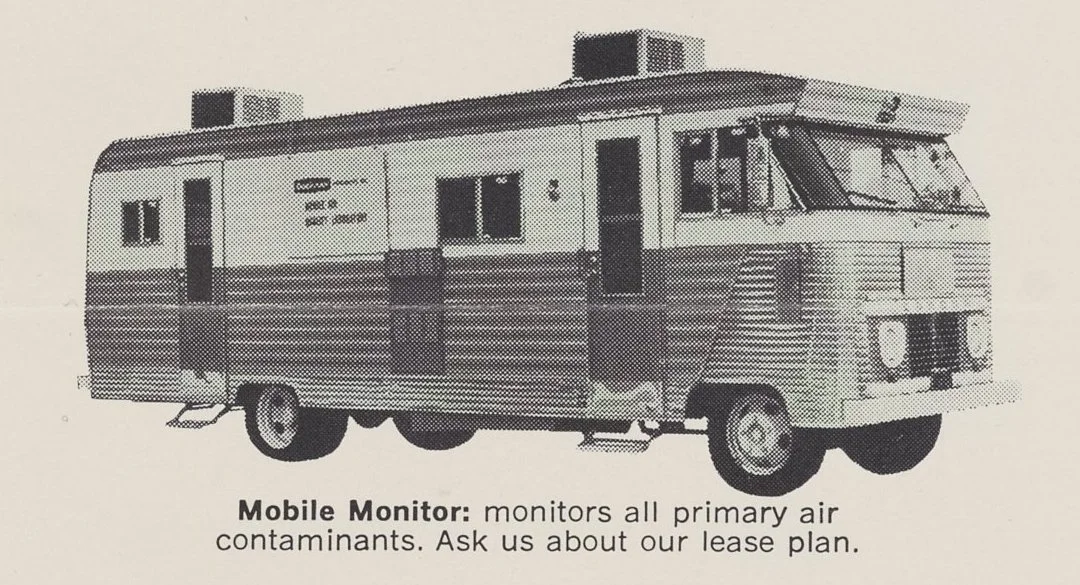Join the Battle Against Air Pollution!
Soldiers of the instrumentation revolution prepare for battle against air pollution. This 1960s advertisement produced by Beckman Instruments, Inc. showed the many ways that scientists and regulators could see air pollution through a new generation of scientific instruments based on physical principles. Copyright Danaher Corporation, image courtesy of the Science History Institute.
Today, anyone can pull up a site like AirNow.gov or AQICN.org to see current air pollution levels for hundreds of cities.
This capacity is an astonishing thing. But not because of the websites.
In long view provided by the history of science, it’s the volume and ease of observation that's revolutionary. We now take for granted information generated by a distributed network of standardized, stable instruments that can make many measurements without an inordinate amount of care and attention by scientists.
Beginning in the 1930s, chemists and physicists began to develop a new generation of machines for analyzing substances. These new analytical instruments measured the composition of samples using physical principles like optics, radiation, magnetism, and electrical conductivity. Instruments were often faster, more sensitive, and more portable than earlier “wet chemical” methods of analysis that relied on measuring weights and volumes. Initially, these instruments were used in profitable industries like food processing, oil refining, and chemical manufacturing.
As instruments were refined and manufactured in large quantities, it became possible to measure more samples, detect substances at lower concentrations, and use less expertly trained technicians to do much of the work. While the new machines were expensive to purchase, the resulting economies of operation made chemistry a much more pervasive practice. Historians of chemistry call this the “instrumentation revolution.”
The instrumentation revolution transformed the study of air pollution through the development of the oxidant recorder. First developed by the chemist and entrepreneur Arnold Beckman in the late 1940s, the oxidant recorder bubbles samples of a gas through a reactive solution, like potassium iodide. As the solution is oxidized by chemicals such as nitrogen oxides, hydrogen peroxide, and especially ozone, it changes color. This color change is measured electronically by a photosensor, and recorded on paper or, later, on magnetic tape.
Beckman and his colleague, Arie Haagen-Smit, convinced the Los Angeles Air Pollution Control District to create a network of these instruments around the city during the mid 1950s, thus showing how oxidant levels were correlated with the harmful effects of smog.
During the 1960s, oxidant recorders became a standard part of the suite of instruments used to measure and track air pollution. Beckman Instruments, Inc. started to produce oxidant recorders as operational tools for routine monitoring of the air, selling them to cities and government agencies like the US Public Health Service. By the mid-1960s, Beckman could advertise a suite of standard air pollution instruments, which included infrared and ultraviolet spectrometers and an upgraded version of the oxidant recorder named the “acralyzer.” These were compact and stable enough to be loaded into the shell of a motor home to produce a mobile smog lab.
The chemical instruments made during the 1950s and 1960s are often grey metal boxes, quite bland looking, and easy to pass by in a museum. But wired together, feeding observations into the regulatory apparatus of a modern government, they define the air we breathe.
Learn More
Peter J. T. Morris, editor. From Classical to Modern Chemistry: The Instrumental Revolution (Royal Society of Chemistry, 2002)





